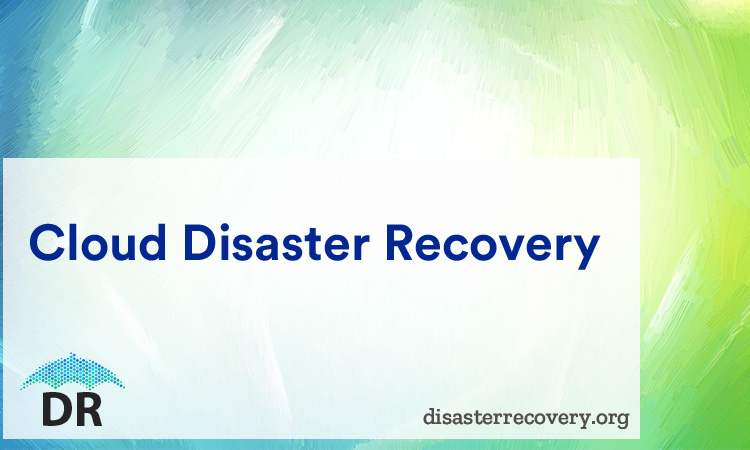Hosting an organization’s applications in the cloud is becoming increasingly popular and is percolating down to small businesses too. Some of the advantages of hosting applications in the cloud are:
Cloud Disaster Recovery

- Large capacity data centers
- Back-up power availability 24x7x365
- Pay-as-you-go facilities means the business pays only for the services it uses
- Real-time data back-up by the cloud service provider
- Easy for organization to scale-up its cloud requirements
There are many more advantages other than the above. However, IT Managers, should do due diligence on the disaster recovery aspect of cloud services. Most cloud service providers do not provide DR services as a default option. That function too may have to be paid for. Therefore, the cost effectiveness of a Cloud Disaster Recovery should be carefully studied, before the contract is signed. Due to intense competition among cloud service providers, the cost of services are dropping rapidly, making it cost effective.
Before transitioning to Cloud Disaster Recovery, the following steps should be taken to ensure the organization gets what it requires at a cost effective rate.
Risk Assessment
- On-site disaster – Fire, explosions, sabotage, long-term power outage, cyber attack etc. which could halt production longer than acceptable
- Area Disaster – Natural calamities such as floods, earthquakes, tornadoes, hurricanes, snowstorms etc. can seriously affect production on-site
- Regional Disaster –These are disasters that affect the entire region such as financial meltdown, terrorist attacks, medical disasters such as Ebola, Plague etc. These disasters can send the entire region into a tailspin and its effect on an organization could be disastrous
A Cloud Disaster Recovery, properly designed and tested, will help mitigate the risks.
Base the Cloud Disaster Recovery on the requirements of the organization
Once the risks have been identified, the Cloud Disaster Recovery platform should take into account the Recovery Point Objective [RPO] and the Recovery Time Objective [RTO].
- RPO – This objective denotes the maximum period for which data could be irrevocably lost without affecting the business. Depending on the nature of the business, some industries cannot even afford to lose an iota of data. For such zero loss RPO’s, the Cloud Disaster Recovery should be designed so that even if a disaster occurs, client services and applications remain unaffected.
- RTO – This factor determines the maximum allowable time that can lapse before recovering data and restoring applications/services to normality.
- The above objectives are directly proportional to the cost of downtime. These costs will include loss of goodwill, loss of employee productivity, loss of reputation etc. Market goodwill and reputation can be lost by just one major incident and the harm it does to the organization is incalculable. Therefore, investing in Cloud Disaster Recovery is money well spent.
Disaster Recovery options available
- Take daily back-ups on tape and store it offsite. This is the cheapest option available
- Synchronous data replication – in this method, every bit of data is replicated in real-time. This is an expensive option
Whichever option is decided upon, IT Managers should ensure that redundancies are available at all times.
Audit Cloud Service Providers before signing up
The Cloud Disaster Recovery offered by the cloud service provider should be carefully studied. The business should demand documentation as to the data protection solutions offered by the service provider. Some cloud services provide daily back-up or periodic back-up, but do not provide immediate redundancy. If the organization has stringent RPO and RTO parameters, Cloud Disaster Recovery should provide back-up in real-time.
Implementation of Cloud Disaster Recovery
A careful evaluation of the cloud service provider is essential. The services provided should match the requirements of the organization. The organization should ask the cloud service provider for documentary evidence that their claims are matched by the reality of the services provided. The last thing an IT Manager needs is to find out, in the face of a disaster, that the promised services are just a mirage.
Cloud Disaster Recovery is a good, cost-effective way to ensure the organization is protected from a disaster. It costs money up-front, but the money spent is well worth it.

